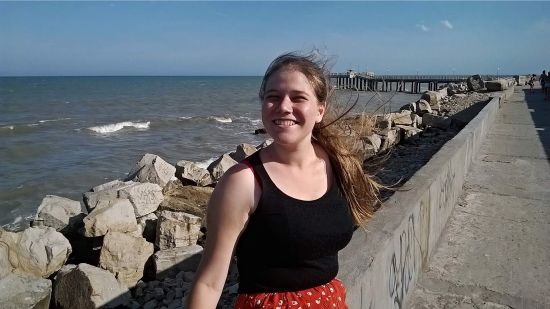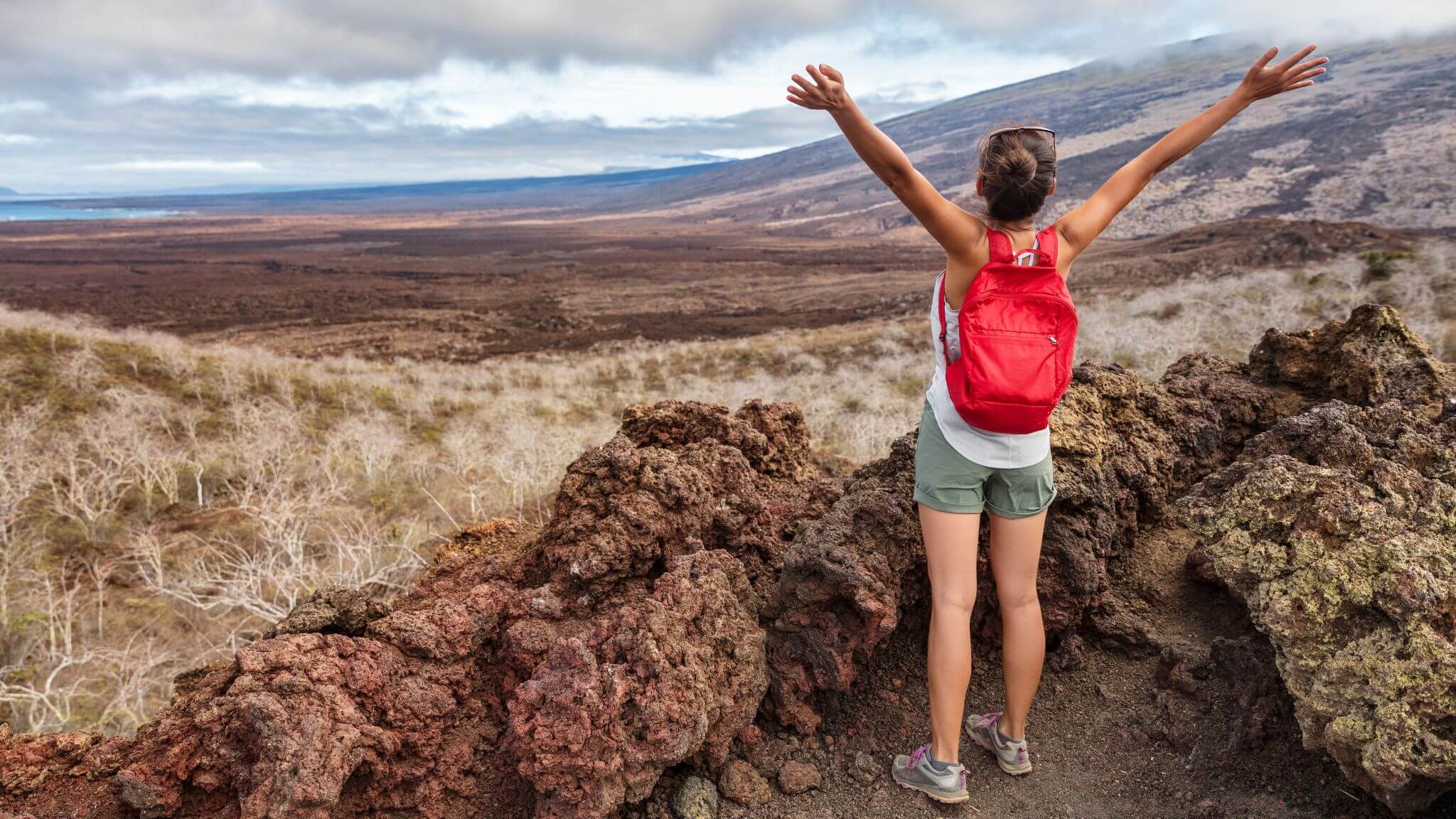From climbing Andean peaks to learning Spanish to trying exquisite cuisines, there are many reasons South America is a top TEFL destination. Many EFL teachers choose to teach English in South America for its diverse landscapes, vibrant cultures, and wealth of opportunities. Teaching English in South America also means you’ll have a huge map of TEFL destinations, as many of these Latin American countries are bustling with opportunities for new and experienced teachers. Here’s what you need to know to teach English in South America, including the types of jobs you can land and how you can get started.
New to TEFL? Get TEFL certified to teach around the world with the 120-hour Bridge Master Certificate or take the first step toward an advanced degree in TESOL with the 150-hour IDELTOnline™.
What is it like to teach English in South America?
With the wealth of jobs and opportunities for unique experiences, many of the countries in South America are some of the prime spots for teaching English abroad. Among the most popular places to teach English in Latin America are Chile, Brazil, Argentina, Colombia, and Uruguay. Many schools and governments in this region have been continuously pushing for bilingualism in curricula, or for ESL programs, and a lot of professionals in different fields like information technology, hospitality, and trade work for multinational companies. Therefore, the number of English learners is constantly increasing. This creates a growing demand for EFL teachers. Chances are, you won’t have to worry about finding potential students!
Teaching English in South America can also provide a lot of variety in your day-to-day life. You can find yourself exploring a bustling city one day and traversing an Amazonian rainforest the next! With its varied sights and sounds, it’s no wonder many English teachers choose to stay in this region for a long time (or stay permanently!). It’s also fairly convenient and inexpensive to travel from one country to another, by land or air, so you can easily plan for many adventures!
In addition to exciting travel experiences, teaching English in South America provides opportunities to interact with and have cultural exchanges with your students. You’ll find your learners are not only driven to improve their English skills, but they’re also enthusiastic and interested in sharing their culture and learning about their teacher’s culture too!
Vesela, an English teacher from Bulgaria, started her English teaching career in Chile as a volunteer. “I had a great volunteering experience,” she said. “I worked alongside a Chilean teacher of English, whom I was helping with classes. The school was so small that I managed to have classes with all the students there, and everyone welcomed me so warmly even though I was a stranger coming from the other side of the world!”
Johan, an English teacher from Venezuela, teaches online Business English lessons in Brazil. Because he teaches online, he has learners from around the world. “I’ve had learners from 26 countries so far,” he said. In his free time, he likes “spending time with my family and my Brazilian friends,” often “hanging out with them in Ciudad del Este, or Iguaçu Falls.”

How much do English teachers make in South America?
Teaching English in Latin America, you can expect to earn an average of $700-$1,500 USD per month. Most English teaching jobs are paid hourly, and English teaching rates range between $10-$25 USD. Keep in mind that when teaching English abroad in South America, salary amounts may vary depending on the region, employer, and your qualifications and experience. The average pay may seem lower than other regions like Asia or Europe, but it is enough to break even or cover the basics like housing, food, and transport, and even have some savings for traveling around the country! That’s because the cost of living in most countries in South America is generally low, though it is recommended to have some backup funds for start-up expenses such as visa fees (in Chile, for instance, certain nationalities have to pay higher fees for obtaining the residence visa) and flights.
Nowadays, the following countries offer the highest rates for English teachers:
- Uruguay ($900-$1,300)
- Chile ($800-$1,500)
- Brazil ($800-$1,500)
- Argentina ($700-$1,500)
- Colombia ($700-$1,000)
It’s also not uncommon for EFL teachers in South America to work for more than one employer or teach private students on the side. It is possible to work for multiple English teaching companies, and if you’re teaching online, you can even expand your market to other countries in South America – or even to other continents!
Find out about teaching English abroad salaries and where you can make the most money.
What is the best South American country to teach English in?
Not sure where to look for TEFL jobs in South America? You may want to consider these top South American countries for teaching English.
Chile
Chile’s large market for English teachers, stable economy, and diverse geography are some of the reasons why new and experienced teachers alike flock to this country. English language institutes and bilingual or international schools abound in big cities like Santiago, Viña del Mar, and Antofagasta. You can work with Chilean learners from various age groups, although you’ll find many opportunities teaching Business English to professionals, especially to those in the mining, I.T., and finance sectors. And when you’re not teaching, there’s an endless list of places to explore, from deserts to beaches to glaciers down south!
Brazil
With its stunning landscapes and rich culture, it’s easy to see why foreign English teachers who come to Brazil end up staying for a longer time or living there. The cost of living in Brazil is also relatively low, and you won’t need a big budget to explore gorgeous beaches, lush rainforests, and other nature-filled wonders!
The demand for English teachers in this Portuguese-speaking nation is consistently strong – a lot of Brazilians are keen on improving their English skills for travel or work purposes, so there are plenty of teaching opportunities in schools, language centers, and even as an independent English teacher.
If you’re an online English teacher looking to work remotely from Brazil, extending your stay won’t be a hassle either, as Brazil offers a digital nomad visa that allows you to stay for up to a year, which you can extend for another year.
Colombia
Besides English teaching opportunities, Colombia is full of history, scenic spots, and friendly people! While a plethora of TEFL jobs in this country cater to teaching adult professionals, bilingualism is a priority in the country’s school systems, so opportunities also exist for teaching kids or teenagers in private language schools, volunteer programs, and government ESL programs.
Colombia is a favorite among digital nomads too, with its affordable cost of living. A digital nomad visa is also available for foreign remote workers who earn their income from outside of Colombia, which allows them to stay in the country for up to two years.
Read about the 10 best places to teach English abroad in 2024.

What are some TEFL jobs in South America?
Depending on the age group you’d like to work with and how you’d like to teach (in person, online, or both), you’ll find various types of English teaching jobs in South America.
Types of jobs for teaching English in person
A vast number of English teachers – especially newcomers in the field – opt to work for language centers or institutos de inglés in South America. You’ll find similar jobs when teaching English in Central America. These private language companies may mostly cater to adult English students, although it is also possible to teach young learners or teenagers after their school hours as well as university students who need to prepare for English proficiency exams such as the IELTS, PTE, and TOEFL. Working for language centers may mean teaching onsite in their main office, or you may be required to travel to your student’s homes or offices to give the class in person.
You can also teach in bilingual or international schools, which are private schools that offer their curriculum in the English language, or teach with the CLIL methodology. The requirements for teaching in private schools may also be more stringent than in language centers, as some of them could require you to have teaching experience or an education-related degree. Nonetheless, the teacher salaries in these institutions tend to be more competitive, especially if you have higher qualifications or specializations in areas like teaching young learners or teaching using the CLIL methodology.
You may also want to keep an eye out for government-sponsored ESL or teacher training programs, which are initiatives that aim to boost the skills of English learners in the country by placing qualified teachers in schools or organizations. Chile, for instance, has an Open English Doors program, while Colombia’s Ministry of National Education has partnered with the Fulbright for English Teaching program that places eligible teachers in universities or educational institutions around the country.
Types of jobs for teaching English online
If you picture yourself as a digital nomad in South America or working from a cute café in Buenos Aires, then teaching English online is an option for you too! You can teach English virtually in different ways:
- You can teach full-time or as a freelancer for online ESL companies.
- You can work independently on online teaching marketplaces like Preply, Cambly, and italki.
- You can work for yourself by running your own online English teaching business!
Tips for finding TEFL jobs in South America
- For most of the countries in South America, the peak hiring season runs from February to March, and the second peak is from July to August. The school year typically starts around February or March and runs through November or December.
- Aside from job boards, other great resources for finding jobs are social media pages or groups. Networking with other English teachers can also lead you to discover new teaching opportunities or connect with potential learners!

How do I become an English teacher in South America?
Are you ready to teach English in South America? If so, getting started is not difficult at all! Here are the steps to help you get started.
Step 1. Get TEFL/TESOL certified.
Requirements for English teaching jobs in South America include the following:
- A TEFL/TESOL certification is almost always required.
- A bachelor’s degree is preferred, but not always required.
- Teaching experience is similarly a plus, but not a major requirement.
If you’re not TEFL/TESOL certified yet, don’t worry – it’s never too late to earn a TEFL/TESOL certification! To qualify for many EFL opportunities in South America, it’s always best to go for a TEFL/TESOL certification of at least 120 hours. Bridge’s Professional Certificates, for instance, provide you with essential training and equip you with the skills that you’ll need to teach English as a second language confidently, as well as qualify you for English teaching jobs not only in South America but also worldwide!
To further boost your resume as an English teacher or showcase stronger qualifications for teaching in specialized areas, you’ll also want to consider adding Specialized Certificates or Micro-credentials to your TEFL/TESOL certification. For teaching English in South America, some of the additional professional development certifications you can add are:
If you’re considering teaching in South America independently, training in the business and marketing side of running an independent teaching business is as critical as coursework in teaching English online. The Succeeding as an English Teacherpreneur Specialized Certification is part of Bridge’s Teacherpreneur Academy, which equips English teachers with the knowledge, resources, and support to launch or expand their independent teaching careers. Taking the steps to gain the knowledge and qualifications needed for a successful independent teaching career will prepare you well for your South American adventure.
Looking for more information? Read about teaching abroad requirements and what you really need.
Step 2. Search for jobs.
You can conduct your job search using various methods like:
- Looking at job boards
- Learning about opportunities with Bridge Preferred Employment Partners
- Using social media platforms like LinkedIn
- Networking with other English teachers
- Checking the list of schools or language centers in specific countries
Step 3. Apply for English teaching jobs, either in person or online.
- Prepare your TEFL resume.
- Record an introduction video.
- Ready your certifications, digital badges, degrees, and other qualifications.
- Prepare for an interview.
Step 4. Check the visa options and requirements in the country you’d like to work in.
Typically, you’ll need:
- Copies of relevant certificates and any degrees
- Your passport
- A photo of yourself
- A clean criminal record
- A health certificate
Step 5. Start teaching!
If you’re passionate about traveling, finding new adventures, and working with students from various cultures, then teaching English in South America should be at the top of your list! Whenever you’re ready to jet-set to this region, you simply have to pick your first destination, start applying, and then begin your adventure!












